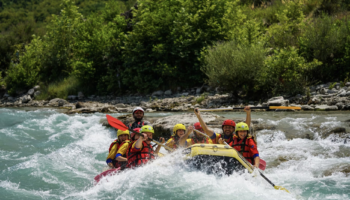If the opportunity to do so presents itself, climbing Mount Kilimanjaro can be exciting, but also nerve-wracking. Braving the highest peak in Africa is an adventure that requires a lot of physical and mental preparation. It is not an easy feat, but it is definitely a rewarding one.
However, in order to reach the summit, you need to be well-prepared. In this article, we will provide you with a comprehensive guide to the dos and don’ts of climbing Mount Kilimanjaro.
Do: Invest In A Health Evaluation
Before embarking on your journey, it is important to invest in a health evaluation. Climbing Kilimanjaro is a strenuous activity that requires a lot of physical effort, and it is important to make sure that your body is in good condition. A medical check-up will help you determine if you have any underlying health conditions that may interfere with your climb.
Don’t: Forget Moiturizer
The air on Mount Kilimanjaro is dry and cold, and it can cause your skin to become dry and cracked. This is why it is important to bring moisturizer with you. Applying moisturizer regularly will help keep your skin hydrated and prevent it from becoming dry and cracked.
Do: Consider Endurance Training
Endurance training is essential for climbing Mount Kilimanjaro. You need to be physically fit and have good endurance to undertake the climb. Start training at least three months before your climb.
Focus on activities that will help improve your cardiovascular endurance such as running, cycling, or swimming. It is important to gradually increase the intensity of your workouts to avoid injuries.
Don’t: Hike On A Full Or Empty Stomach
Eating a balanced diet is important for climbing Kilimanjaro. However, it is equally important to avoid hiking on a full or empty stomach. This can lead to digestive problems and affect your performance. Eat a light meal before starting your climb and carry snacks that are high in energy to keep you fueled during the climb.
Do: Pack As Light As Possible
Packing for your climb is crucial. You need to pack everything you need but at the same time, pack as light as possible. You will be carrying your own gear during the climb, and the lighter your backpack, the easier it will be to climb.
Pack only the essentials and avoid carrying unnecessary items. Make sure to include warm clothes, a waterproof jacket, a hat, gloves, sunscreen, and a headlamp.
Don’t: Be Hasty During The Climb
Climbing Kilimanjaro is a test of endurance, and it is important to take your time during the climb. Do not rush or be hasty, as this can affect your performance and increase the risk of altitude sickness. Take breaks when needed, and listen to your body. It is better to climb at a slow and steady pace rather than rushing to the summit.
Do: Know What To Expect
Knowing what to expect is important for climbing Kilimanjaro. You need to be mentally prepared for the climb. Research the route, read about the experiences of other climbers, and talk to your guide to get a better understanding of what to expect. This will help you mentally prepare for the climb and increase your chances of reaching the summit.
Don’t: Try To Show Off The The Hike
Climbing Kilimanjaro is not a race or a competition. It is important to focus on your own performance and not try to show off. This can lead to injuries or altitude sickness, and it can also affect the performance of the entire group.
Conclusion
Climbing Mount Kilimanjaro is an incredible experience, but it requires preparation and planning to ensure a successful, safe climb. By following these dos and don’ts, you’ll be well-prepared for your climb and increase your chances of reaching the summit. Just remember to take your time, listen to your body, and enjoy the journey





